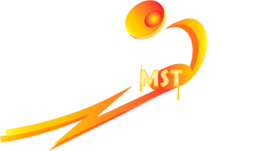
Don’t you wish you could draw on confidence in the same manner as you can draw water from a well? In a sense, you can – but maybe not in the way you might be thinking! Let’s explore confidence today.
One of the most impactful books I have run across on confidence is Tomas Chamoro-Premuzic’s book entitled “Confidence – How Much You Really Need and How to Get it”. I say it was impactful as it turns the concept of raising self-esteem on its head!
While I believe in the mental skill of utilizing positive self-talk (see my previous post on that topic here)
I am not in favor of being delusional about it! Chamorro-Premuzic makes the case that confidence is not the same thing as competence. In fact, true confidence comes from developing competence. In the recreational sporting world, that means developing the tools and techniques you need to perform through skills (both physical and mental) practice. He talks extensively about the confidence / competence gap, and the resulting danger inherent in being tricked into believing you are actually more competent than you are. He emphasizes that, instead of thinking we need to develop higher confidence, we should really be trying to lower our confidence so that the areas in which we need improvement can shine through! When you start feeling a little shaky in your confidence, that is really a good thing! It is your brain sending you mental cues as to areas you need to focus on for improvement – don’t miss the opportunities to make these improvements!
This is a similar concept as the Lake Wobegone affect that you may be familiar with:
The Lake Wobegon effect is the human tendency to overestimate one’s achievements and capabilities in relation to others. It is named for the fictional town of Lake Wobegon from the radio series A Prairie Home Companion, where, according to Garrison Keillor, “where all the women are strong, all the men are good-looking, and all the children are above average”. In a similar way, a large majority of people claim to be above average; this phenomenon has been observed among drivers, CEOs, stock market analysts, college students, and state education officials, among others. Experiments and surveys have repeatedly shown that most people believe that they possess attributes that are better or more desirable than average
Don’t fall into this trap. Try to keep a realistic appraisal of your true competence. Instead of seeking to find more confidence, develop your competence – the confidence will follow!
I strongly recommend Chamorro-Premuzic’s book. He covers the topic exceptionally well in a way that I find very useful both in sports as well as in life. In his comments in the following link, Brad Lawrence had mentioned that sports can be a metaphor for life. This is a prime example.
For those interested in purchasing the book, here is the amazon link:
Take a few minutes to explore your own Confidence / Competence gap and see how it can help you!
References:
Chamorro-Premuzic, T. (2014). Confidence: How much you really need and how to get it. NY, NY, USA: Plume.
Lake Wobegon. (2021, January 10). Retrieved January 10, 2021, from https://en.wikipedia.org/wiki/Lake_Wobegon
Lake Wobegon effect. (n.d.). Retrieved January 10, 2021, from https://psychology.wikia.org/wiki/Lake_Wobegon_effect
